Aug 6, 2022
Mohnish Pabrai
Mohnish Pabrai is a highly respected investor, author, and philanthropist known for his value investing approach. He is the Managing Partner of Pabrai Investment Funds, an investment firm he founded in 1999. Mohnish is a follower of Warren Buffett’s value investing principles and has achieved significant success with his investments over the years. He is also the author of “The Dhandho Investor” and “Mosaic: Perspectives on Investing,” where he shares his investment philosophy and insights. Mohnish is deeply committed to philanthropy and has pledged to give away the majority of his wealth to charitable causes. He is a sought-after speaker and has been featured in various financial publications and media outlets for his investment expertise.
One Line Life Lessons from Mohnish

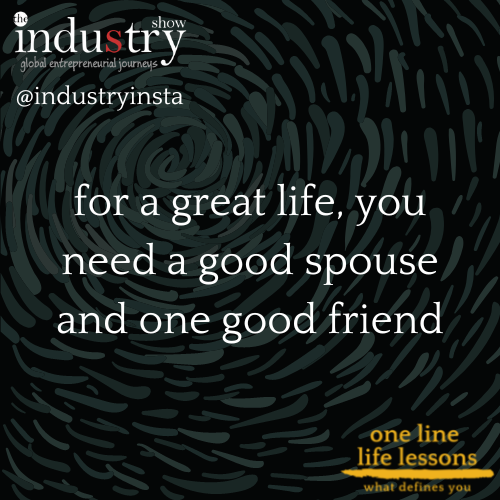
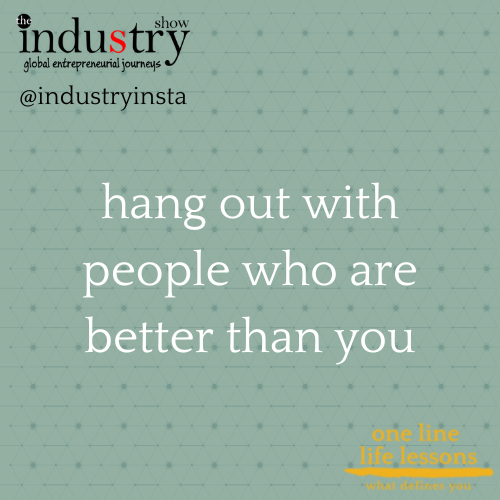
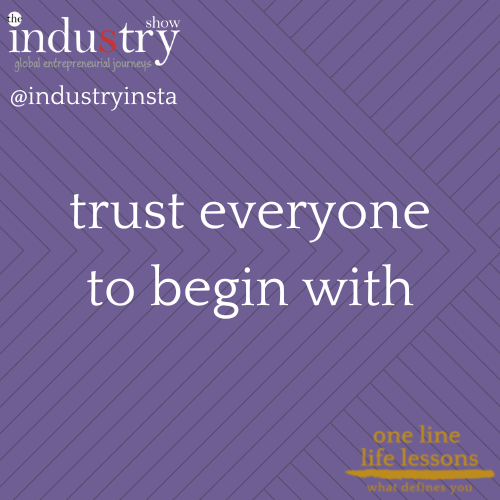
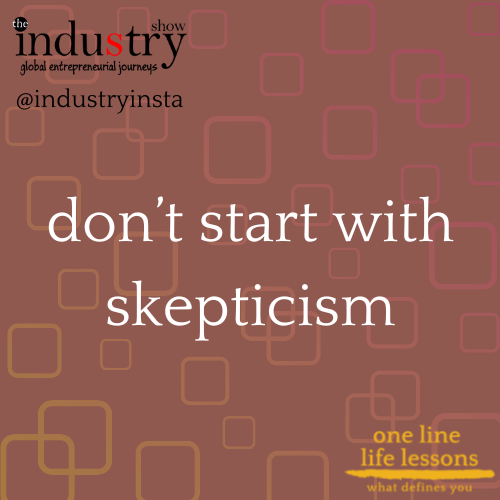
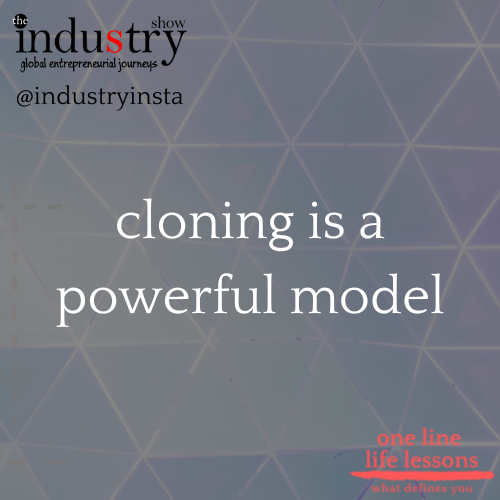
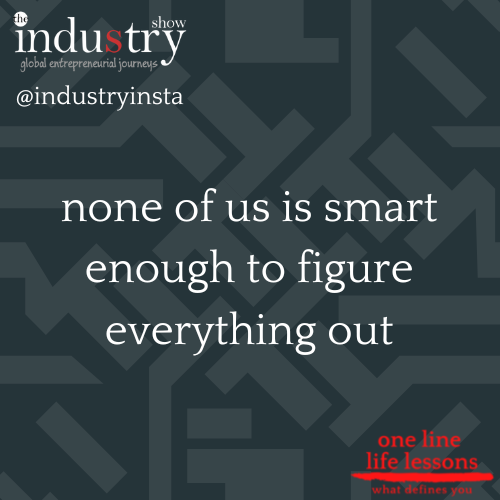
Episode Highlights
- 00:00 – Introduction and discussion of Mohnish Pabrai’s work and wealth accumulation.
- 04:15 – Playing “underrated or overrated” game covering stock market valuations, startup valuations, and crypto.
- 10:30 – Delving into societal problems, nonprofit work, and the potential harm of large inheritances.
- 15:45 – Evolution of Pabrai’s investment framework over 28 years and the importance of identifying growing businesses.
- 20:10 – Emphasizing the value of learning from failure, taking calculated risks, and embracing cloned ideas.
- 25:00 – Discussing investment strategies, personal experiences, and the role of stoic philosophy in decision-making.
- 30:20 – Stressing the importance of pursuing passion with intensity and integrity while earning trust through a consistent track record.
Show Transcript
Transcript - Full Episode
Nitin Bajaj
Hey, everyone. Welcome to the industry show. I’m your host, Nitin Bajaj. And joining me today is the 1 and only Maharaj as I like to call him, Mohnish Pabrai. Mohnish, welcome on the show.
Mohnish Pabrai
Nitin pleasure to be back. Good to be with you.
Nitin Bajaj
Thank you. We’re so glad to have you back here. So let’s start with the big question. Who is Mohnish?
Mohnish Pabrai
Well, you know, living, breathing room and then like everybody else. So, there’s, you know, we’re, we’re very similar in many ways. I think there’s not much difference between different humans from that that perspective.
Nitin Bajaj
As always, you’re too humble, too kind, and I don’t know if there is any similarities here, but I do look up to you and the work you do. So let’s before we go deeper into what you do, let’s play a little game. We call it the underrated, overrated, and it’s about different themes that impact us as a community. And we’re looking for a one word response, whether you think it’s underrated or overrated, and it’s a game. So with that in mind, let’s start with stock market valuations.
Mohnish Pabrai
Overrated. Okay.
Nitin Bajaj
What about startup valuations? Overrated? Real estate prices?
Mohnish Pabrai
Overrated.
Nitin Bajaj
Crypto? Overrated. NFT?
Mohnish Pabrai
Overrated too.
Nitin Bajaj
What about the Omniverse or metaverse?
Mohnish Pabrai
Again, I’m sorry, but overrated.
Nitin Bajaj
No. It is what it is. What about cash?
Mohnish Pabrai
Cash, I’d say underrated.
Nitin Bajaj
Okay. And inflation?
Mohnish Pabrai
Overrated. K.
Nitin Bajaj
And the great resignation.
Mohnish Pabrai
The great resignation, Mohnish?
Nitin Bajaj
Well, people are Yeah.
Mohnish Pabrai
All these people. Yeah. Yeah. Underrated.
Nitin Bajaj
Okay. Alright. Well, that was fun. Thanks for playing along. Let’s talk about something that’s, more closer to you. And, we can do it 1 of 2 different ways. I can ask you about, you know, the business, or I can just ask you something as open ended as what do you do for a living?
Mohnish Pabrai
Sure. Yeah. Well, you know, I, my, my my younger daughter, I think when she was, like, about 10 years old, someone asked her that question. You know, what does your dad do? And I think she gave the perfect answer. So, she said people give him money. He makes it into more money. He keeps some of the money and gives the rest back to the people who gave him the money. So that’s what I do.
Nitin Bajaj
That is so cool. And I a 100% agree with that. But let’s talk about a little more of the the size and scale, but, you know, what I’m personally interested in is the impact. Right? I know you’re in the business of making money, so we can talk about the size and scale, but also you’re using that money for creating a lot of positive impact. And I would love to hear a little more about that.
Mohnish Pabrai
Sure. I mean, I think that, basically, I think for for most of us who end up in a lifetime with more, assets than we can consume, which is a which is a great problem to have. You basically have only 2 choices. You can either in some way recycle it back to society, or you can pass it on to your gene pool or some combination of the 2. And generally, generally speaking, large inheritances, to your kids will tend to do more harm than good. Mhmm. I think, I think, Buffett has a quote. He says that you’re Jesse Owens’ son, you know, the sprinter. He says, you shouldn’t be allowed to start 100 meter dashes at the 40 meter line. That it’s okay to start at the 10 meter line, but not the 40 meter line. I mean, if you if you ask someone to start a 100 meter dash or the 40 meter line, you know, you’re not gonna bring out the best in them. And, and so, so I I was aware, thankfully very early on that, passing on large inheritances to my kids, etcetera, wasn’t going to be as helpful, might even be hurt hurtful. And, so when you when you think of, recycling back to society, it’s it’s a little bit it’s actually very different from investing in the sense that in investing, we get to pick our spots. You know? I can look at a 1,000 stocks and pick 2 that I like and invest in them. When you’re trying to solve societal problems, you know, the things that you have to confront are things like poverty, education, health care, environment, climate change, so on. So each of these problems has had 1,000,000,000,000 of dollars that have been spent against them. A lot of it not working. And, and so they’re not easy problems. So you don’t you don’t get the choices in investing. You’re forced to confront tough problems. And so the rules are different. And, and so one of the reasons I started early, I mean, I, I think Dakshana started about 15 years ago and started thinking about it 16 or 17 years ago is that I didn’t want to start thinking about these problems when I was, you know, in my eighties or late seventies because I would not have any energy. And, when I started looking at nonprofits that I could support and, you know, help and so on, I was very disappointed. I, actually couldn’t find any that ran the way I think a nonprofit should run. And, and I did not want to set up a nonprofit. I didn’t want to. That’s a lot of work. But because of the disappointment, I said, well, you know, I have to at least try. And maybe I’m, you know, being delusional, but at least I can try and then come back to giving it to somebody else. And so that’s what led to the creation of Dakshana and we, stuck to a few core principles. And, I think these principles are very important, to, to have impact in in the nonprofit world. And the problem most nonprofits have is not only do they not follow these principles, they have no idea what they are. Mhmm. So they’re kind of wandering the wilderness. And if you these are not my principles. I think they’re almost universal principles. And so if you don’t if you don’t follow these, if you don’t measure outcomes, if you don’t care about, like, social return of invested capital and so on, then you’re not going to, get, optimal results.
Nitin Bajaj
Makes sense. If we look at our funds and I know you have a couple of different, entities under which you run your, for profit business. What would you say today is the size and scale of the operations?
Mohnish Pabrai
Well, you know, we, this is, investing is not a business that requires large teams. So I have a I have a very small team. We manage, like, 500 odd 1,000,000. Mhmm. And basically, we basically invest, only in public traded equities and sometimes once in a while bonds and such.
Nitin Bajaj
And I know you’re you famously refused to have large teams and you, I believe, still do a lot of the work yourself. As you said, looking at maybe a 1000 companies and picking maybe 1 or 2. So it makes me want to ask you why do this?
Mohnish Pabrai
Well, I mean, I, I, I do it because I enjoy Mhmm. And, and I think that, I I used to, in the 1990s, I used to run a it services system integration company. And, I had started that company in my bed room, and it grew to about a 170 people. And, in the late nineties, I actually lost all interest in the business and actually wanted to quit. But there was no one to quit to. I own the business. And, and, and I went through this, testing with these 2 industrial psychologists in late in 99. And, for the first time, actually, when I was about 34 years old, I got what I would call my owner’s manual, which is they, showed me who I was. And, and one of the things that was very clear is that who I was was very different from trying to run this this business with all these people, which was basically my job had become an HR, herding cats job. And, and what they basically told me is they said, look, you like to play games, but you like to play very specific kind of games. You you don’t like to play team sports. You are more of an individual game player where outcome depends on you and not a team. And you try to play games where you have some edge and you can win. And at that time, I was just thinking of starting Pabrai Funds in early 99, and I explained to them what I was thinking about. So first of all, they told me to get rid of the business as soon as I could, which I did. I, I hired a CEO and then subsequently someone wanted to buy the business and we moved on. But, when I showed them what I was going to do with Pabrai Funds, they said it was perfect. And now it’s been, like, 23 years and I am still, you know, tap dancing to work every day. It’s great.
Nitin Bajaj
That is awesome. Now I’m sure, you know, even with that comes some challenges. So as a business owner, what’s the one big challenge you’re facing?
Mohnish Pabrai
Well, I mean, I think I, I think I think, adversity is just part of life. I think, I think there are no humans who don’t encounter adversity, and, our our job is to, face it, overcome it, and, you know, move on. You know, I used to have a, I overdosed on stoic philosophy a while back, you know, Marcus Aurelius and stoicism.
Nitin Bajaj
Mhmm.
Mohnish Pabrai
And, which basically says that, you know, adversity is a blessing and to face it and overcome it, you actually become better, which has been my life experience. Each time I’ve encountered something, which has been difficult, it has made me better. But recently I ran into the writings of this Pabrai, Pabrai Akiva who lived maybe 2000 years ago. And and I actually was, I had to do a reset on my mental models. So one of the stories about Rabbi Akiva, which really kind of, had an impact on me was that, he was a very, you know, renowned teacher, and, he was the head of this temple and all of that. And these invaders came, and they burnt his temple down. And as the temple was burning, he was outside the temple dancing. And, so it wasn’t that he was I mean the stoic philosophy would be grin and bear it. He wasn’t grinning and bearing it. He was rejoicing. And and so in effect, basically, what, you know that poem by Rudyard Kipling, treat those 2 impostors alike, you know, the good and the Bajaj. Treat those 2 impostors alike. And so what Pabrai Akiva was basically saying is everything is transitional. And and there’ll be good times, and there’ll be bad times. And the times will change from one to the other. So you don’t need to have your mood swings go on with the good and bad times. You can be in a permanent state of light. Mhmm. And so to me, that was a revelation. Now I don’t know if I can practice that, you know, dancing while the temple’s burning. But I think it’s a it’s a tremendous mental model to try to live up to. So I don’t I don’t actually when I look at my life and I look at, you know, in the past we’ve all had adversity, But when I look back in the past, at the challenges, those very things that were difficult led to a lot of growth. Mhmm. And so how can you not think of it as a blessing then?
Nitin Bajaj
True. True. And I remember having this discussion a few weeks ago with someone we had on the show where we believe when we look back at our own, past, the best that I have performed is when I’ve been pushed to the corner. When I had, but no option to fight the situation. You know, whether it was back when I came to this country and had to start pretty much from scratch. Or when I was looking at, you know, we had the recession and a few other times, when you look back, you realize that’s probably when you did your best. Yeah,
Mohnish Pabrai
absolutely.
Nitin Bajaj
On the flip side of challenges come opportunities. And, if you were to pinpoint one that you’re most excited about right now, what would that be?
Mohnish Pabrai
Well, I mean, I think the, the thing that I think excites me the most is, I’ve been, I’ve been a value investor for, I think, now about 28 years. It’s been a been a while. Mhmm. And and I’ve read a lot and I’ve, you know, interacted with, the best in the world and so on. And I have I’ve had certain frameworks and models, that I followed, which have worked pretty well. And, one of the models that I ran into recently, were these, these two books I read, which talked about 100 baggers. They talked about stocks, that went up a 100 times or more. Yeah. So I’ve been a value investor for about 28 years. And of course, over that time, you know, I’ve, continuously been a student and learning and I have a framework. The framework works pretty well. And, recently I made changes to the framework. So even after 28 years, it’s still, you know, changing and evolving. And, and I think the the change is exciting because, you know, there are different ways you can kind of go at investing one way, which is a way Ben Graham talked about is you buy a dollar for 40¢
Nitin Bajaj
Mhmm.
Mohnish Pabrai
Assets worth a million for 400,000, for example. Generally, good things will happen to you if you if you’re able to do that. But the but the holy, holy grail, of investing is not buying a cheap asset and waiting for it to be, you know, coming to full price. The holy grail is to buy a pie that is growing
Nitin Bajaj
Mhmm.
Mohnish Pabrai
And growing a lot. And and if you are able to identify, growing pies, then, sometimes even a very expensive looking price can be a terrific bargain. For example, you could have paid even a 100 times earnings for Starbucks 20 years ago, and or you could have paid a 100 times earnings for Walmart 30 years ago. And those have been great investments. And, typically a person like me, you know, looking at a Starbucks or a Walmart, even at 40 times earnings would, you know, take a pass. So I can’t do that. You know, there’s certain wiring I have, which I can’t change. I can’t really pay up, for things that look really great. But but there are, there are some things about that framework where you can let it ride for longer. So, for example, if I were to invest in a great business and it goes up a lot and it looks optically expensive, You know, I may have bought it at 10 times earnings and it’s got great growth and now it’s at 45 times earnings, for example. Mhmm. Earnings have grown, but it looks fully priced. A few years back, I would look at replacing that with something else. Now the question I ask myself is, is the business getting better? And if the business is getting better, is the mode getting deeper, the mode getting wider? Then what you can do is you can give it more slack. So you would steal something sell something if it got egregiously overvalued. But you would tolerate, things that were 20, 30, 40 percent optically overvalued. True. Because the idea is that if you can capture the long runways of a few great businesses
Nitin Bajaj
Mhmm.
Mohnish Pabrai
That can actually get you to the promised land. And, I used to do that format of investing in the mid to late nineties and, had done well. But then, you know, things got so crazy and euphoric with the True. Dotcom bubble. And I was I thankfully was able to see the bubble before, it went to went on to implode that, I went more towards, very non sexy stocks, and we did really well with that. True. But I think in the long run, you’re better off investing in great growing pies. Someone like me cannot pay a lot for those pies, but I can learn to hang on to them. And, so that’s, I would say what’s been exciting recently.
Nitin Bajaj
You know, that really plays along well into my next couple of questions. 1 is, as you look back in the rear view mirror, what is one thing that really stands out where you hit the ball out of the park and you’re super proud of it? And then on the other end, something that did not work out as well and maybe became a lesson learned.
Mohnish Pabrai
Yeah. So actually this gets gets to a point which I’ve been thinking about recently. The interesting thing about life is is that it has asymmetries. Mhmm. Asymmetries are a really good thing. So, what are asymmetries? The asymmetry is that, you embark on something where the upside is huge and the downside is nonexistent or very little. Anytime you have that type of a situation, you need to go for it. And, and so for example, one of my, mental models has always been that in a week, we have a 168 hours. Mhmm. If you’re working at a job, typically, it’s 40 hours. Then, you know, you got some commute time and whatever, you know, 60, 70 hours, 80 hours, whatever. But, when you look at the whole week, you have at least another 40 hours that you could put towards something else. And when I was employed as an engineer in my early twenties, what I was doing is that I was interested in starting a business. And, and and, so I was not interested in quitting my job and then taking a flyer because that’s very high risk, but I could do that on the side. So I remember the first, the first company we put together, there were 3 of us. I think I was 22 or something. And we met a few times. We had some, a software tool. 1 of the guys had built and we were thinking of you know, putting together a business that would, you know, market and grow that and that sort of thing. And, we met probably for a few months and, you know, hacked around with it. And then the in the end, nothing happened. It fizzled out. I didn’t even probably lose $500, with that venture. Okay. And I learned a few things, you know, and then a few years later, about 3 years later, I had another idea. And this time it wasn’t team. I was doing it myself. And, this one after about 9 months, had traction. And, so once I had real clients and I had real cash flows, I quit my job. And so I switched from one path. So, again, I mean, the thing is that I would have continued to, you know, keep testing this thing with different ideas being thrown up against the wall till something hit. Right? And there was no price to be paid. And, in in in investing, it is the same way. And I think that, for example, I remember in, 94, I was taking a flight back from, Heathrow to Chicago, you know, coming back from vacation, looking for something to read. I read a book by Peter Lynch. I had never, done investing before and I loved his book on investing, 1 up on Wall Street. And I wanted to explore this area more. Right? And I read his second book and that, he was talking about Warren Buffett, and I read Buffett’s letters and Berkshire Hathaway. And then it opened up a whole new world that I kept drilling down and reading on while I was running this IT business. Right? And then I started on the side to apply some of those lessons, which eventually led to me becoming a professional investor and so on and so forth. So I think the thing is that we we have to pay attention to asymmetries. If I look at the price, the total amount of capital that went in to start the business, it’d be less than $1,000 Okay? There have been years where in a single year I’ve made 70,000,000 in fees, you know, not just in a in a portfolio going up. So it’s highly asymmetric. Right? And and and the thing is that I think we have to always keep our eyes peeled on when we see these asymmetry show up. And, when the asymmetry show up, the downsides are limited. It’s going to take some effort, but you don’t you can’t really lose anything. You gotta go for it. And, so that’s, that’s, and even even I would say even in the nonprofit side, with Dakshana, we did really well because we adopted these principles. In nonprofit work, you have to do high risk, high return. In investing, we try to do low risk, high return. But in, when you’re doing nonprofit, you have to swing for the fences and you have to be willing to you have to be very willing to strike
Nitin Bajaj
out.
Mohnish Pabrai
And, so we found a model that looked good and we hit hard against that model, and it worked. And, if it had not worked, then we would, you know, gather our chips and try again. And you gotta keep doing that.
Nitin Bajaj
True. Is that an example of something where you did not take the risk and, you know, kind of look back and say, oh, that’s a lesson.
Mohnish Pabrai
Well, I mean, I think that what I’ve what has happened is that, I’m I’m sure there have been many, many times when I should have acted and I didn’t. That probably is a long list. But I also I also see, a number of endeavors where I acted and it didn’t work. And in some cases, there was a meaningful price to be paid when it didn’t work. It wasn’t, you know, 0. It was it was meaningful. But in looking back, that led to a lot of growth. So I just don’t see a real downside. We we obviously want to take these swings where the downside is very limited. Mhmm. But sometimes we take these swings, like, for example, I think in 2014, I had this bright idea, which I know now is very dumb, of starting an insurance company. And I raised about a 150,000,000 of capital, And I bought a insurance company in Louisiana, doing workers’ comp insurance. And almost just a few weeks after I bought the business, I realized it was a mistake. Mhmm. And I realized it wasn’t gonna work. And, and I, obviously was unhappy with, and thing, how dumb can you be? And but then I said, you know, we have to put the toothpaste back in the tube no matter how hard, you know, how hard it is to put toothpaste back in the tube. Have you ever tried to do that, Nitin? You know, it doesn’t go back the same way it comes in. Yeah. And but but I focused on that. Focused on so I said, what I wanna do is I wanna reverse everything. I want to get rid of the insurance company, get the money back, and send it back to the investors and just finish it off. And that that process is, been going on for 7 years. Most of the toothpaste has gone back in the tube. The company got sold and all of that. And the investors will get all their money back, which is great. And, so but it was not so easy. It took it took effort. But I knew that if I had not acted to reverse, then it would just be a downward spiral. It would it would just keep getting worse. So there was pain. We took the pain. We’re still taking the pain. But it doesn’t feel like pain anymore. Feels just fine. I’ve I think maybe, like, Pabrai Akiva, we are dancing at this point, so it’s okay.
Nitin Bajaj
Well, that’s some amazing perspective to have, and an experience to to learn from, which brings me to my favorite part of the show. We call this the one line life lessons. We’d love to hear and and you sprinkle a few of those, in the past few minutes, but we’d love to hear a few more of your one line life lessons.
Mohnish Pabrai
Yeah. So, I would say that some of the some of the, I really call them mental models as opposed to life lessons, I think. And when you overlay these mental models, you know, one on top of the other, you get what Charlie Munger would call lulaploser effects 1 plus 1 becomes 11. So you really get some spectacular things. The other thing is that none of us is smart enough to figure everything out. If we do well, it’s because we stand on the shoulders of giants. There have been many giants that come that have come before us. I actually don’t think I have any new ideas. I just have I have collected ideas from others and so one of the ideas which I think, one of the mental models which I think has served me really well is the model on cloning.
Nitin Bajaj
Mhmm.
Mohnish Pabrai
And, there’s something, weird about humans. I still haven’t figured out. I’ve been a student of cloning for more than 35 years and I’ve seen how powerful, cloning is as a model. So we don’t need to come up with the great idea. The great ideas are already there. We can pick it up and intensely follow it. If you look at a company like Microsoft, it has never come up with anything ever on its own. Most of it has been stolen Mhmm. Or copied or bought from somewhere else. So even Windows was taken from the Mac and Word from WordPerfect and Excel from Lotus and Bing from Google and on and on. You know? And, they’re one of the most valuable businesses on the planet. Same with Sam Walton at Walmart. Walmart never came up with anything. Neil, they copied their model from Sears and Kmart, both of which failed, but Kmart, Walmart is still with us. So clearly a very powerful model there. I found Warren and Charlie or Warren Buffett and Charlie Munger. I saw their model. I just had to adopt it. I didn’t have to figure much out. I just could pick it up. So I would say that there is something quirky in the human psyche which looks down on cloning. We cannot think of it like copying, And that’s the wrong model. I think we’ve got to pick up the ideas no matter where they’ve come from and, take it. So cloning is a very important idea. I talked about asymmetry. Another way to, talk about asymmetry is heads, I win. Tails, I don’t lose much. Right? And in in investing and in life, we always want to make bets where the downside is muted and the upside is huge. And periodically, the market serves up these kinds of opportunities to us. And so when we see this asymmetric upside downside, we have to act on those. So an asymmetry comes up in many different forms. I told you it can come up when you’re working somewhere and you want to start a business. You have asymmetry in the outcomes. It can come up when I’m looking at an investment. It can come up in many, many different areas. It can even even even come up in in, things like dating apps. Okay? So for example, you know, if we were looking for a life partner, or a girlfriend or a boyfriend or whatever, the dating apps make it really easy. Okay. Now if you find someone incredible to spend your life with, what would you be willing to do to get there? You’d be willing to do a lot, But the dating apps are very easy for you to meet 20, 40, 50 people. And if you had some filtering mechanism and you went on 50 dates, you would find the most amazing person, and you’ll drive off into the sunset. It’s asymmetric. The dating apps do for us what we couldn’t do before the Internet. It’ll be much harder. So I think the thing is that these asymmetry show up all over the place, and we just have to, look for them. Another, another model which is really important is the default to use with all humans is complete trust. So if you’re dealing with someone new okay. Let’s say I I need a plumber for my house, and I call a plumber. I’m not going to have any reservations about completely trusting the plumber. I will wait till the plumber screws me over. Mhmm. And if he screws me over, I will never use that plumber again. Right? So it’s kind of like you’re innocent until proven guilty. So the world doesn’t run on contracts. It runs on trust. And when you have what I would call the seamless web of deserved trust, it’s the word Charlie Munger uses, your life becomes really good. So if you have a team with full trust, all the people around you fully trusted, your life’s gonna be really good. And, and basically don’t start off with being a skeptic. Start off with, you know, lowering your, your guard and saying you are completely trusted. So that gives you, another edge in life, which is, you know, the another mental model, which has, been really very important and very useful is hang out with people who are better than you. So there’s a gravitational pull. If we hang out with people who are better than us, we will become better. If we hang out with people worse than us, we will become worse. And so you have to be what I would call a harsh grader. So for example, if I go to lunch with someone, right, I ask myself after the lunch, was that a mind blowing experience? Did I really enjoy that? If I didn’t really enjoy that a lot, I will never do it again. My dad used to say, to have a great life, you need one good wife and one good friend. So we don’t need large volumes of humans in our network. We need a very high quality set of humans in our network. Even if that number is 3 humans, it’s enough. So don’t try to chase large groups of great people. They they don’t exist. You’re gonna be disappointed if you start looking for large groups of great people. But when you find someone who’s a kindred spirit, who you can look up to, who you can learn from, and who you enjoy mutually spending time with, that’s unbelievable. I mean, when I moved to Boston, I’ve been here about 3 months, what I did is I like to just spend time with myself. I’m very happy, you know, not meeting a lot of people. What I what I did is I lowered the bar to meeting people. And, so I said, you know, I’m not going to be that picky or selective. I just want to see because what I what I was looking for is, if you remember that, M. Night Shyamalan movie Unbreakable.
Nitin Bajaj
Yeah.
Mohnish Pabrai
You know, he’s in this quest to find these unusual people. Right? And so he was he was doing crazy things to find these, people who are unbreakable. My take is that if I widen the funnel, it is more likely that I may find someone amazing. Now every meeting I’ve had so far has mostly not been repeated because they weren’t what I was looking for, and that’s fine. But, again, it’s asymmetric. What’s the downside? There’s no downside. The tea is still good. You know? The food is still good. Life is great. Rabbi Akiva, you’re still dancing. It’s okay. You’re just not going to have that same dance with the same person again. That’s all. So these are some, some lessons I would, I would say. And the other thing I I would say is that, when you have a passion for something, whatever it is, go on in. Don’t listen to the naysayers and all this. I remember I used to be an engineer, and I was taking a downward promotion, actually, a demotion going into marketing. And my engineer friend used to say, you know, you’re like, this is ridiculous. But I I was interest interested in doing that. It was the right move. And so I didn’t do it. It didn’t look like I was furthering my career, but I was doing what I was thrilled about. So I would say pursuit of passion with high intensity Mhmm. Is really important. And then I would say the other thing is that, to conduct all your affairs, with the highest levels of integrity. Mhmm. So what you want the most, the most precious commodity you have is people having complete trust in you. And, of course, there are some people like me who just give you default trust. Right? Most humans don’t quite function that way, but you have to earn their trust. And and, the only way to earn their trust is with a track record. And so I think living your life in a manner where integrity over all else is really important.
Nitin Bajaj
Mohnish, thank you so much for sharing those valuable mental models of what we call the one line life lessons, extremely helpful. And thank you for dancing with us again. We really Alright.
Mohnish Pabrai
It it was fun. It was great, and, look forward to the next one.



